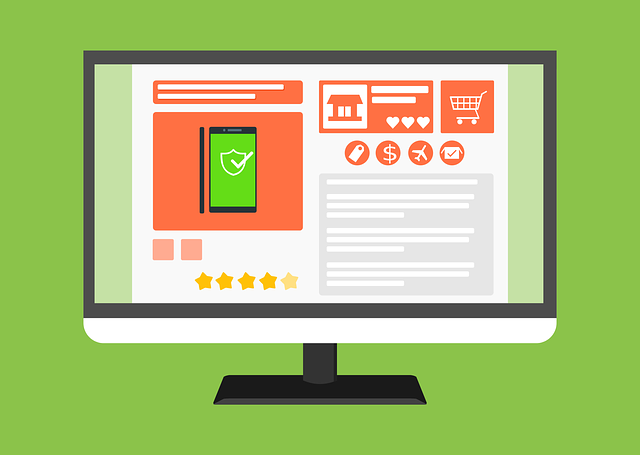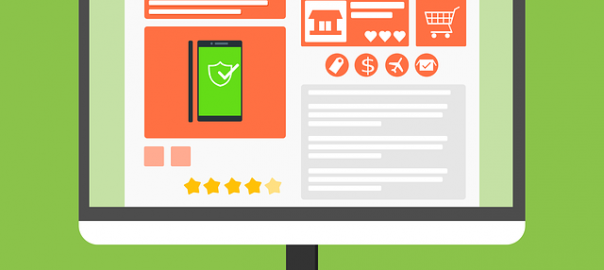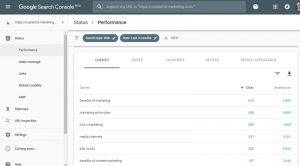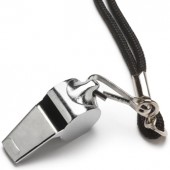— November 1, 2017

JuralMin / Pixabay
It’s that time of year again—the holiday shopping season. As we quickly approach what is for many ecommerce businesses their most profitable months of the year, many marketers are busy developing holiday-themed campaigns, getting budgets approved, and thinking about all the things they could do to drive more sales before year-end.
In order to get the most out of the holiday season as an ecommerce business, it’s imperative that you take time to plan ahead. It’s the only way to successfully drive more brand awareness, traffic, and sales during the last few months of 2017.
Not entirely convinced of the opportunity or the urgency? Consider the following:
- The National Retail Federation reports that over 40% of people plan to begin their holiday shopping by October.
- The NRF expects holidays sales during November and December to increase between 3.6 and 4 percent for a total of $ 678.75 billion to $ 682 billion, up from $ 655.8 billion last year.
- According to Adept, 48% of holiday shoppers said they did the majority of their shopping on or before Cyber Monday.
If you haven’t started thinking about what kind of holiday marketing campaigns you want to launch in November and December, you need to start today—before it’s too late!
Here are eight tips that will put you on the right track toward building a winning holiday marketing campaign for your ecommerce store:
Tip #1: Think About All Your Goals
The first step in developing any successful marketing campaign for your ecommerce store is to first think about your goals. If you don’t know why you’re launching a campaign or what you’re hoping to get from it, it’s virtually impossible to determine whether your campaign brought your business any sort of value in the end.
If you’re like most ecommerce business owners, your primary goal will be obvious: to drive more sales. There are, however, a handful of other goals that you should be thinking about as you build your campaign. Here are some examples and questions to consider as you think about the goals you want to set:
- Brand Awareness — How will your campaign help you reach and attract more people? How will it help improve your reputation and solidify yourself as a legitimate player in your industry? How will it help you secure the collaborators and partners you’ve been trying to establish relationships with?
- Website Traffic — How much traffic do you expect your campaign to bring to your website and product pages? What specific goals can you set and track as your campaign progresses? How would this increase in traffic ultimately impact sale in the short-term and long-term for your business?
- Email Opt-Ins — Will this campaign help you build your email list? If so, how many contacts are you hoping to add by the end of your campaign? How would being able to communicate with this new batch of leads impact sales over time?
- Links — Do you expect to build or receive links as part of this campaign? How many links are you securing now, and how many do you expect to secure with the help of this campaign? How would new links help improve your domain authority, reputation, and sales? What specific numerical goals can you set relating to this?
- Social Media Mentions — How many social media mentions or interactions about your brand or products do you want to influence throughout your campaign?
- Other Types of Engagement — How many comments or other forms of engagement would you like to influence as a result of this campaign? How will this ultimately impact sales?
By thinking about your goals in this way, you’ll have a much easier time building your campaign, justifying your spend, and tracking both the immediate and long-term ROI of your efforts.
Get the 7-Step Content Marketing Checklist for Ecommerce [DOWNLOAD]
Tip #2: Look Back at Your Past Campaigns, Then Look Across at Others
To build a successful holiday marketing campaign, you need to spend some time thinking about what has worked well for you in the past. Before you get too far in the process, spend time looking at your campaigns from last year and previous years and ask yourself the following questions:
- What was the focus of your campaign?
- What were the goals you set and why?
- What did the results look like?
- What went well and what didn’t?
- How can you improve upon the process this year?
- What was your budget like, and what sort of return did you see?
- Did you allow yourself enough time for your campaign? Do you wish you would have had more time? Do you think more time and planning would have made your campaign more successful?
- What were the main learnings or takeaways you had in the weeks and months following your campaign?
- How did your audience respond to your campaign? Did they like it? Hate it? Did it drive engagement and help you improve your reputation?
- What metrics didn’t you track last year that you’d like to be able to track this year? What do you need to do to make that possible?
Spending time going through this exercise will help you understand what you need to do differently (or the same) this year in order to increase the likelihood of your success.
In addition to looking at your own campaigns, it can also be beneficial to spend time learning what other ecommerce companies did to boost sales and fuel growth last year during the holidays.
To dive into other examples and case studies, explore some of these resources:
- 150 Years of the Best Holiday Campaigns from Bigcommerce
- 8 Awesome Black Friday Cyber Monday Email Campaigns You Can Steal This Holiday Season from Shopify
- Holiday Email Marketing Unpacked: 15 Examples, 9 Tools and a Checklist to Make 2017 Your Biggest Success Yet from Bigcommerce
- 7 Black Friday and Cyber Monday Landing Page Examples from Unbounce
Looking at examples from other ecommerce brands both inside and outside of your industry can help you think more creatively and strategically about your own campaigns this year.
Tip #3: Focus in on Your Audience
To maximize performance and ROI, you also need to understand your audience. When deciding what kind of marketing campaign you want to launch this holiday season, and where you want to focus your efforts, work through the following questions:
- Who is the audience that you’re trying to sell to in November and December?
- What are their motivations when it comes to buying from you?
- What are their hesitations?
- What are they most concerned about this time of year, and what are they most excited about?
- What are they thinking about, and how are they spending their time?
- Which channel(s) are they spending the most time on this time of year (email, Facebook, Instagram, Google, YouTube)?
- How did this audience respond to your holiday campaigns last year? What lessons did you learn and how will you communicate differently with them this year?
- What specials or deals would they be most excited about?
- Why should they buy products from you this time of year vs. another company?
- What qualitative feedback have they given you in the past about your brand or products that you could incorporate into your holiday campaign?
Focusing in on your audience in this way will help you build a holiday campaign that’s catered for them specifically—something that they will actually care about and respond to. If you need help understanding how to better identify your audience, start with this great resource from ConversionXL.
Tip #4: Choose Your Stack
As you get closer to kicking off the process of actually building out your marketing campaign, you’ll want to make sure you have the right tools in place to help you boost productivity and efficiency at every phase.
Though not all-encompassing, here are some recommended tools that you might want to consider using when building and launching your holiday marketing campaigns this year:
- For sending email campaigns: Mailchimp
- For launching giveaways: Heyo (this tool is particularly useful for building and managing Instagram contests)
- For tracking social mentions: Mention
- For leveraging customer content to boost social sales: Yotpo
- For tracking performance: Google Analytics
- For scheduling social media updates: Buffer
- For campaign project management: Airtable
For even more recommended tools to add to your technology and marketing stacks this fall, explore this resource.
Tip #5: Develop Your Theme, Idea, & Branding
To get the kind of return you’re looking for this holiday season, you need to spend time developing a strong campaign theme that aligns with your brand, your products, and your audience. To land on one that works well for all three, start by thinking about when you want your campaign to run.
For example, do you want your marketing campaign to run for all of November and December, or would you rather focus on a specific day like Cyber Monday? Would your audience be more excited and motivated by a Thanksgiving-Themed campaign, a Christmas-themed campaign, or a New Year’s themed campaign? Are the people who buy your products spending time with young kids this time of year, or are they empty nesters?
Think about what theme would make the most sense for your business, then let your theme guide your efforts as you build out the rest of your campaign.
Once you have your theme in mind, think about the actual offer that you want to promote to people in order to drive more sales. For example, you could offer special discounts for Cyber Monday, free shipping on all orders from now until the end of the year, or special pricing on bundled products that people may want to buy as gifts. Again, think about your audience and what they would be most motivated by. Use historical information from prior campaigns to create an offer or deal that brings the most return for your business during this time of year.
As you build your campaign, make sure your holiday-themed design components and copy align with your overarching brand standards—you want to have fun with it, but you don’t want to go so over-the-top that your audience doesn’t recognize or associate your campaign with your brand and its reputation.
Tip #6: Secure Promotion Partners
To boost success, spend time beforehand connecting with and securing relationships with the right partners who can help you when it’s time to promote your campaign. Your goal is to find partners who can help you tap into audiences that you otherwise might not have had direct access to. Some examples include:
- Other ecommerce businesses that align with your mission and sell products that serve the same audience as you.
- Vendors that you already have established offline relationships with who can promote your campaign to their network.
- Social media influencers in your space that can help spread the word about your campaign to their community of loyal followers.
- Industry bloggers or editors of product review sites who can feature your products and campaign in an upcoming post.
- Traditional news organization editors who can write journalism-focused stories about you, your business, and your brand story.
If you haven’t spent a lot of time connecting with influencers or partners in the past, read through these resources first:
- Instagram Influencer Marketing: Three Steps to Unleash the Power of Social Celebrities in Ecommerce from Shopify
- The Definitive Guide to Influencer Targeting from Kissmetrics
- Influencer Marketing: How to Reach New Audiences With Paid Brand Evangelists from Shopify
Tip #7: Plan Ahead, Then Launch
As I mentioned at the beginning of the post, the biggest thing you can do to ensure your success when it comes to launching and running holiday marketing campaigns is to give yourself enough time to plan, prepare, and launch. Keep in mind: the end of the year is an incredibly competitive time of year for any ecommerce business. Nearly every online retailer is competing for the attention of the same group of people: those who are willing to shop online.
Give yourself enough time to develop a creative, original, and compelling campaign that will help you cut through the noise and reach your target audience. Before you launch your campaign, work through all the other tips mentioned above—talk to customers, build your tech stack, review campaigns from last year, find your partners, etc.
When you finally have all the pieces in place: launch!
Tip #8: Hire Extra Fulfillment Help
In ecommerce, your work doesn’t stop after you launch your campaign. It continues on until your customers have the products they purchased from you over the holidays in the hands.
To avoid damaging your reputation or losing out on future sales, make sure that you have the extra help needed to handle the uptick in fulfillment that you may receive after you launch your holiday marketing campaigns. Keep to the promises you make on your website and in your transactional emails when it comes to shipping and delivery estimates.
Hire family friends and other part-time workers ahead of time to ensure that you have the extra help needed in order to get every order out on time. Doing so will help you keep your new customers happy and your brand reputation intact going into the new year.
Over to You
What are you doing right now to get the most out of the upcoming holiday shopping season? Tell me in the comments below.
Digital & Social Articles on Business 2 Community
(68)




